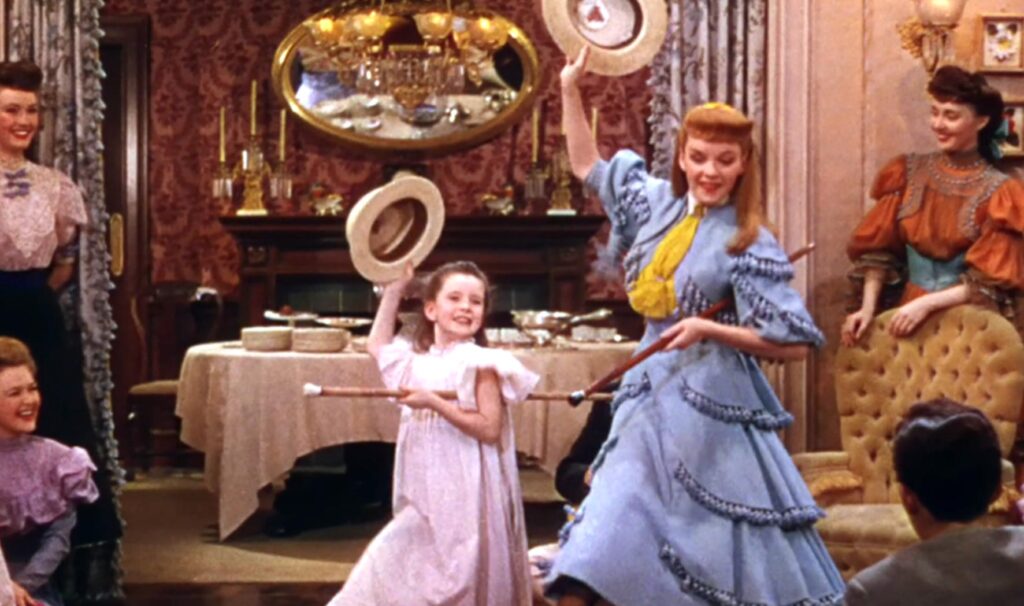
Meet Me In St. Louis (1944) is one of a handful of films that defined the public’s notion of the MGM musical. The essential ingredients at work here can be distilled down to the collaboration of Arthur Freed and Vincente Minnelli; who together crafted some of the greatest movie musicals of all time. Which is why it is so impressive that Meet Me In St. Louis is only Minnelli’s third feature film. The hallmarks of Minnelli’s style begin to show here but he is cautious and keeps, to the most part, well within Freed’s rigorous guidelines.
Arthur Freed was and still is one of the most important and influential creative producers Hollywood has ever seen, and it is from Freed that Minnelli is taking all of his cues. Unlike Minnelli’s later masterpieces An American In Paris (1951), The Band Wagon (1953) and Some Came Running (1958) there isn’t a lot of moving camera or elaborate blocking in Meet Me In St. Louis. There is a hint of what would come later in how Minnelli shoots the “Under The Bamboo Tree” and “Skip To My Lou” numbers, but mostly Minnelli is trying on what worked for other directors like Ernst Lubitsch and Rouben Mamoulian (the staging of the opening number in Meet Me In St. Louis recrates Mamoulian’s opening to Love Me Tonight from 1932). Some things Minnelli will keep, some he will discard, but undoubtedly Minnelli remade the musical genre by and for the fifties.
Though Arthur Freed and Vincente Minnelli were the Machiavellian geniuses authoring the film, the face of Meet Me In St. Louis is Judy Garland’s. Meet Me In St. Louis is very much a showcase for Garland as she transitions from Mickey Rooney’s girlfriend into more mature roles at MGM. To this end Minnelli’s restraint and caution works; his minimal cuts and static framing often allow Garland to shine during her more intimate numbers, particularly the immortal “Have Yourself A Merry Little Christmas”. Garland is phenomenal in this film that shows audiences nothing but her strengths as a performer.
However, what has made Meet Me In St. Louis such a classic comes down not just to these three giants of old Hollywood, but to some of the supporting players and the little moments Minnelli put into the film to give it a sense of life beyond the “plastic scope” of the genre. Margaret O’Brien’s morbid tomboy Tootie steals almost every scene she’s in. Her eccentric quips and sincerity make her one of the great child stars. Minnelli clearly understood how strong O’Brien was on camera based upon his staging of the Halloween sequence which is the one section of the film where Garland is even remotely sidelined. It is in the Halloween sequence that Minnelli incorporates one of his more effective asides as well. His choice to linger the shot of the man and his bulldog after Tootie has dowsed them with flour brings us out of the fantasy and into a moment born of our “shared reality”.
Meet Me In St. Louis is essential viewing for all of these reasons and many more that I haven’t bothered to touch upon. A Christmas classic, I strongly recommend revisiting, or watching for the first time, this MGM classic. Warner Bros. has also done a stellar remaster, decked out with insightful special features, for home video (as is their custom).
